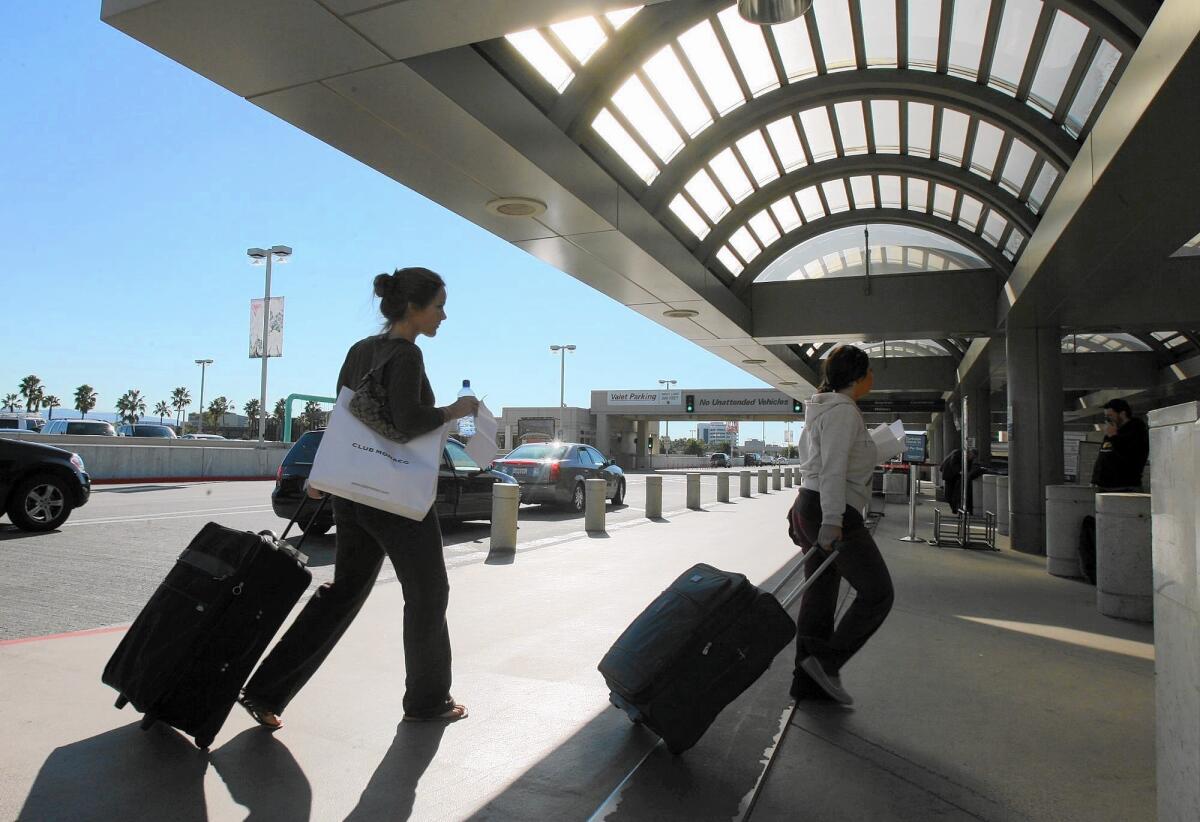JWA control tower rated low in financial efficiency

Air traffic control operations at John Wayne Airport are among the least financially efficient when compared with those of airports of similar size nationwide, according to the U.S. Department of Transportation.
A report by the department’s inspector general shows that the Federal Aviation Administration-controlled towers at John Wayne used more labor hours and equipment to handle each reviewed operation than more-efficient towers at medium-sized hub airports.
JWA was the only airport in its class to be termed “frequently least efficient.”
However, the FAA said comparing air traffic towers among airports can be misleading because of differences in air traffic volume, airspace complexity, facility size and overnight closures — which happen at JWA — that shift air travel and costs from one airport to another.
Similar airports, including Bob Hope in Burbank, Dallas Love Field, Luis Munoz Marin International in Puerto Rico, Eppley Airfield in Nebraska, Sacramento International and Bradley International in Connecticut, were ranked as more efficient than JWA.
The inspector general calculated that inefficient air control tower operations nationwide added $853 million to the FAA’s costs from 2008 to 2013. The least-efficient hub airport towers were estimated to use as much as 42% to 66% more resources than more-efficient towers of comparable size.
An airport spokeswoman declined to comment on the report’s findings.
John Wayne served 927,934 passengers in July, up 10.8% from the same month in 2014.
Total air traffic operations handled by the FAA declined 19% between 2004 and 2013. However, the FAA’s operations budget increased slightly during the same time, which resulted in the inspector general looking into the issue, according to the report.
The inspector general recommends that the FAA develop a plan to cut costs based on the research in the report.
The FAA, “like other federal agencies, is being asked to do more with less, and this can only be accomplished by identifying how to use resources efficiently,” the report stated.
The investigators wrote in the report that the study provides a starting point for the FAA to look into the factors driving efficiency at certain towers, which could ultimately reduce costs.
While FAA officials agree that efficiency can be improved, they wrote in their response to the report that enhancements made at one tower will not necessarily benefit all towers, as the inspector general’s publication indicates.